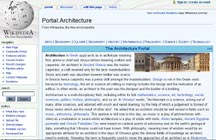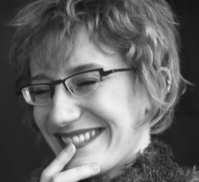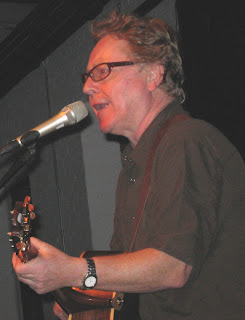Coordinates: 44°56′24.92″N, 93°11′36.33″W The
University of Saint Thomas (also known as
UST or simply
St. Thomas) is a coeducational
archdiocesan Roman Catholic institution of higher learning based in
Saint Paul, Minnesota. Founded in 1885 as a Catholic
seminary, it is named after
St. Thomas Aquinas, a medieval Catholic theologian and philosopher who is the patron saint of learners in the
Roman Catholic Church. Now a university, it currently enrolls more than 11,000 students, making it Minnesota's largest independent college or university.
Father Dennis Dease became the 14th president of the University of St. Thomas on July 1, 1991.
Campuses The main campus, built on a farm site once considered "far removed from town," is located where St. Paul's stately Summit Avenue meets the Mississippi River. The site was farmed by ex-Fort Snelling soldier William Finn, who received the property as a pension settlement after he accidentally shot himself in the hand while on guard duty.
The western edge of the campus borders the Mississippi Gorge Regional Park.
Summit Avenue, which runs through the middle of the campus, is the country's longest span of
Victorian homes. This tree-lined avenue includes the Governor's Mansion,
F. Scott Fitzgerald's townhome, and
James J. Hill's spectacular mansion.
The 78 acre (316,000 m²) St. Paul campus consists of the original 45 acre (182,000 m²) campus, five acres (20,000 m²) of adjacent properties and 28 acres (113,000 m²) of the St. Paul Seminary campus (informally referred to as the "south" campus) that was transferred in a 1987 affiliation between St. Thomas and the seminary. The beautifully landscaped campus has been used as a setting for two motion pictures.
St. Thomas is currently involved in an aggressive expansion project. The fall of 2005 marked the completion of the expedient 15-month construction of a new apartment-style residence hall. Selby Hall now sits on top of a three level underground parking ramp and houses an additional 400 residents. This is part of a larger plan to develop the land south of Summit Avenue. Recently completed is McNeely Hall, a large classroom building for Business that will replace the small, ineffective building of the same name that sits quietly next door. A new residential village, more parking ramps, and general civil engineering all have been negotiated successfully with the surrounding neighborhood. These developments are expected to begin within the next five years.
In addition, the designing of a new student center is currently in the works as the current student center, Murray-Herrick Center, is out of date and incapable of serving students and staff to the fullest extent. The new student center is slated to be placed on an existing parking lot, hold underground parking, and be large enough to contain a new cafeteria, a ballroom, offices, a gathering area, and other facilities that are currently unavailable or inefficient.
The St. Paul campus is home to most undergraduate students.
The Saint Paul campus In fall 1992, the university opened a permanent, 150,000 square foot (14,000 m²) campus at 1000 LaSalle Ave. The first building, named Terrence Murphy Hall in May 2000, is headquarters to the university's Opus College of Business. Artist Mark Balma created one of the largest frescoes in the United States on the arched ceiling of its atrium. The seven-panel, 1,904 square foot (177 m²) fresco was completed in the summer of 1994 and portrays the seven virtues discussed in the writings of St. Thomas Aquinas.
Directly across the street is Opus Hall. The four-story, 100,000 square foot (9,000 m²) building opened in summer 1999 and is home to St. Thomas' School of Education. Connected to Opus Hall is a K-12 magnet school that also opened in 1999.
The University of St. Thomas School of Law began operations in Terrence Murphy Hall in fall 2001; the new School of Law building opened in 2003 and is located on the block south of Terrence Murphy Hall.
Schulze Hall welcomed its first students in September 2005. It is home to the university's Schulze School of Entrepreneurship, which brings together the university's graduate and undergraduate degree programs in entrepreneurship as well as its centers and institutes that provide entrepreneurship-related educational programs and services. It is part of St. Thomas' Opus College of Business, which is headquartered in adjoining Terrence Murphy Hall.
The Minneapolis campus The Gainey Center is located on 180 acres (728,000 m²) in Owatonna just one hour south of the Twin Cities. The conference center and satellite campus was built around the French Norman-style home of the late Daniel C. Gainey who bequeathed the property to the university upon his death in 1979.
The Gainey Conference Center (Owatonna) The University of St. Thomas Bernardi Campus is located on the west bank of the Tiber River on Lungotevere delle Armi in Rome, Italy.
Purchased by St. Thomas in November 1999, the Bernardi Campus houses St. Thomas students participating in academic programs and offers guest accommodations for visitors. Situated in the heart of the modern Prati Zone, the campus is near both the center of Rome and Vatican City.
The University of Thomas is the only university in the United States to have a formal affiliation with the
Pontifical University of St. Thomas Aquinas, called the "
Angelicum." The university was founded by the Dominicans in the 16th century.
The Bernardi campus (Rome) Founded in 1885, St. Thomas began as an all-male, Catholic seminary.
John Ireland,
archbishop of Saint Paul and Minneapolis, started the St. Thomas Aquinas seminary, which became a
liberal arts college in 1894. A gift from local railroad tycoon
James J. Hill provided funds to establish the St. Paul Seminary apart from the college. In 1896, college officials made an artificial lake on campus, Lake Mennith, using water from an underground stream. Located in the lower quadrant, the shallow lake dried up in 1922. The College of St. Thomas became a military-based school for undergraduates in 1906 and awarded its first academic degrees in 1910. Before that, the school gave out two-year diplomas in commercial and classical programs. In 1915, the college and St. Thomas Military Academy for high school students split into two institutions and in 1965 the academy moved to
Mendota Heights. The college later dropped its military distinction in 1922.
History Organization Father Thomas O'Gorman (1885 – 1887)
Father Edward McSweeney (1887 – 1888)
Father James Keane (1888 – 1892)
Father James Byrne (1892 – 1899)
Father John Dolphin (1899 – 1903)
Father Humphrey Moynihan (1903 – 1921)
Father Thomas Cullen (1921 – 1927)
Father John P. Foley (1927 – 1928)
Father Matthew Schumacher (1928 – 1933)
Father James Moynihan (1933 – 1943)
Father Vincent Flynn (1944 – 1956)
Father James P. Shannon (1956 – 1966)
Monsignor Terrence Murphy (1966 – 1991)
Father Dennis Dease (1991 – Present)
 Presidents
Presidents Each year the university awards almost 2,500 degrees including four different bachelor's degrees (B.A., B.S., B.S.M.E. and B.S.E.E.). There are 88 major fields at the undergraduate level, with 59 minor fields of study and seven pre-professional programs. At the graduate and professional level, the university offers 41 master's degrees, two education specialist, one juris doctor and five doctorates.
The University of St. Thomas is a member of the
Associated Colleges of the Twin Cities (ACTC), a consortium of five private liberal arts colleges. Other ACTC members are
Augsburg,
St. Catherine,
Hamline and
Macalester. This program allows students to take classes at any of the associated universities as long as the class is not offered at their home university.
Academics The university offers its degree programs through nine divisions:
The College of Arts and Sciences includes undergraduate departments in the arts, humanities, natural sciences, and social sciences, plus a number of interdisciplinary programs. Master's-level programs are offered in Art History, Catholic Studies, English, and Music Education.
The Opus College of Business has seven departments offering graduate and undergraduate curricula in an interdisciplinary setting. The college offers nine degree programs at the graduate level including Evening, Full-time and Executive MBAs and a Master in Business Communication. It is home to a variety of centers offering credit and noncredit seminars and a continuing-education program called the Center for Business Excellence.
The St. Paul Seminary School of Divinity offers master's- and doctoral-level degrees oriented to theological study and the practice of ministry. The school also offers a two-year pre-theology program for priesthood candidates who require additional preparation.
The School of Education offers undergraduate courses and curricula for elementary and secondary teacher licensures. Graduate study is offered leading to certificates, master's, educational specialist, and doctoral degrees.
The School of Engineering offers graduate and undergraduate engineering degrees. Located on the St. Paul campus, programs in the college are committed to leadership in engineering and industry, in innovation, and in development of the whole person. They are built upon a firm –foundation of values and global awareness, and embedded in the context of the liberal arts. The college offers bachelor of science degrees in mechanical engineering (B.S.M.E.) and electrical engineering (B.S.E.E.), masters degrees in manufacturing systems engineering (M.M.S.E), manufacturing systems (M.S.M.S.) and technology management (M.S.T.M.) The B.S.M.E. and M.M.S.E. degrees are Engineering Accreditation Commission of ABET accredited.
The School of Law was re-opened in 1999 after a 66-year hiatus. The first class of 120 students was accepted in fall 2001.
The School of Social Work offers undergraduate courses and curricula for social work and chemical dependency counseling. The Master of Social Work, offered as a joint degree program with the College of St. Catherine, is designed to provide advanced professional study in social work. Dual-degree programs are offered in cooperation with Luther Seminary, the Department of Theology at the College of St. Catherine, and the St. Paul Seminary School of Divinity.
Master's- and doctoral-level degrees are offered in counseling psychology. A certificate in family psychology also is offered.
These programs offer master's-level programs in software engineering.
College of Arts and Sciences Opus College of Business Saint Paul Seminary School of Divinity School of Education School of Engineering School of Law School of Social Work Graduate School of Professional Psychology Graduate Programs in Software Engineering Schools and colleges Athletics have been important at St. Thomas since the institution first opened in 1885. In the first 20 years, intramural baseball teams were quite popular. The Tommies' school colors -- purple and gray -- evolved from the "Blues" and the "Grays," the top intramural baseball teams in the 1890s.
Varsity intercollegiate sports began in 1904, and St. Thomas celebrated its 100th year of varsity athletics in 2003-2004. (Varsity football didn't play during World War II in 1943, thus the 2004 season was the 100th season of varsity football).
[1] St. Thomas leads the Minnesota Intercollegiate Athletic Conference in NCAA Division III Team Championships won with 10. Their longtime archrival is
St. John's University from
Collegeville, Minnesota.
The Minneapolis Star Tribune reported in a mid-1990s article that St.Thomas University was considering making a jump to Division I in athletics. Those rumors diminished soon after.
NCAA Division III The University of St. Thomas is a member of the
Minnesota Intercollegiate Athletic Conference (MIAC).
The school colors are purple and gray. The team mascot is "Tommie."
Athletics 2006 2005 2004 2001 2000 1999 1995 1996 1991 1988 1987 1986 1985 1984 1983 1982 Women's Softball - 2nd in the Nation
Women's Golf - 2nd in the Nation
Men's Lacrosse National Champions
Men's Hockey - 2nd in the Nation
Women's Softball - National Champions
Women's Softball - National Champions
Men's Baseball - National Champions
Men's Baseball - 2nd in the Nation
Men's Hockey - 2nd in the Nation
Men's Baseball - 2nd in the Nation
Women's Outdoor Track - 2nd in the Nation
Women's Cross Country - 2nd in the Nation
Women's Basketball - National Champions
Women's Cross Country - 2nd in the Nation
Women's Cross Country - National Champions
Men's Cross Country - National Champions
Women's Cross Country - National Champions
Men's Indoor Track - National Champions
Women's Cross Country - 2nd in the Nation
Men's Cross Country - National Champions
Women's Cross Country - National Champions
Women's Cross Country - 2nd in the Nation
Women's Outdoor Track - 2nd in the Nation
Women's Cross Country - National Champions
Accomplishments Undergraduate housing is found on the St. Paul Campus. Approximately 2400 residents live in 7 traditional halls, traditional apartment residences, quasi-on-campus apartment residence, 3 university-owned specialty houses, and the undergraduate residence for St. John Vianney Seminary. All traditional halls are single-sex, while apartment residences are single-sex by floor.
Each hall is governed and supported by its own hall council, which is part of a larger student organization called the
Residence Hall Association. Hall councils plan activities and events in their own hall and support larger resident-based programming on campus. RHA as a whole deals with resident issues and serves as a liaison between residents and the larger university community.
Student housing Brady Hall Cretin Hall Dowling Hall Grace Hall Ireland Hall John Paul II (JPII) Hall Murray Hall The University of St. Thomas offers what they call special interest floors, or floors that are intended to house specific residents. Almost one third of all floors are First Year Experience floors, which consist of only freshmen. This is a nationwide practice that attempts to create a cohesive community by placing students together that will have a similar experience. UST also has a few FYE Weekend Activities floors, a newly created Catholic Women's floor, the Changing Faces of Minnesota floors, the Women in Math & Science floor, and a couple Substance Free floors.
Built in 1967 and named in honor of
Archbishop William O. Brady Brady Hall is the largest male residence hall on campus.
Built in 1894, designed by famed architect
Cass Gilbert, and named in honor of the first Bishop of St. Paul,
Joseph Cretin Built in 1959 and named in honor of
Archbishop Austin Dowling Built in 1913, designed by famed architect
Cass Gilbert, and named in honor of the second Bishop of St. Paul,
Thomas Grace Built in 1912 and named in honor of the first Archbishop of St. Paul and founder of the school,
John Ireland Built in 1978 and named in honor of
Pope John Paul II Built in 1978 as the first female hall on campus and named in honor of
Archbishop John Murray Apartment complexes Common Ground
The Wellness House
Child Development Center Housing
Castel Milano (Catholic Studies Men's House established in Fall 2005, name relating to the house patron Saint Augustine who had his conversion in Milan
Castel Oropa (The Second Catholic Studies Men's House established in Fall 2006, name relating to place where house patron Blessed Pier Giorgo Frassati would literally run to mass every morning)
Specialty houses and buildings St. John Vianney College Seminary (SJV)
Saint Paul Seminary School of Divinity (SPS)
Film and movies Larry Bond - Game designer and author
Dottie Cannon -
Miss Minnesota USA 2006
Tom Dooher, President,
Education Minnesota Vince Flynn - Author
Jim Oberstar - U.S. Congressman
Will Steger - Polar explorer
John Vachon - Photographer
Ann Winblad - Venture Capitalist
Emily Carlson - Anchor/Reporter
William Easton - Today's Groom Magazine Co-Founder
Jacob Schraufnagel - Today's Groom Magazine Co-Founder
Michael J. Hoffman - CEO, The Toro Company



 Biography
Biography

 Breeding habits
Breeding habits





 Institiúid Teicneolaíochta, Tamhlacht
Institiúid Teicneolaíochta, Tamhlacht
 Craters
Craters Technical specifications
Technical specifications Solo discography
Solo discography

 Trivia
Trivia Presidents
Presidents GUI Scripting
GUI Scripting General-purpose dynamic languages
General-purpose dynamic languages Taglines
Taglines Plot synopsis
Plot synopsis